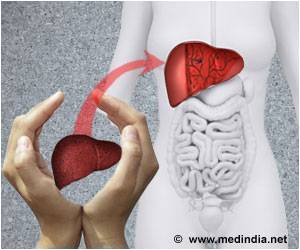Even with the MELD system in place, there remains geographic differences in the number of patients who die waiting for a liver transplant.

‘In geographic areas with more liver transplant centers, centers were more likely to say "no" to organ offers for their sickest patients.’





A team led by David Goldberg, MD, MSCE, an assistant professor of Medicine at Penn, set out to examine if there could be more impacting these disparities than geography alone. They analyzed 23,000 unique organ offers to 13,255 unique patients across the nation's 11 Organ Procurement and Transplantation Network (OPTN) regions between May 2007 and June 2013 to examine the role that the transplant center itself may play in these inequities. "We found that not only is there a wide variation in acceptance rates for donor organs among transplant centers, these variations directly correlated with whether the sickest patients would die waiting for a lifesaving transplant, with patients 27 percent more likely to die without a transplant for every five percent decrease in a center's adjusted organ offer acceptance rate," Goldberg said.
When an organ becomes available, UNOS ranks all patients eligible to receive the organ based on blood-type match, the recipient's geographic location, MELD score and the recipient's willingness to accept organs with characteristics such as Hepatitis C or over a certain age. The organ is then offered at the center at which the highest-ranked patient is waitlisted. This process is known as a "match run."
A center - most often a transplant surgeon at the center may decline an organ based on donor quality (age), donor-recipient size mismatch, or the opinion that a patient with lower priority has a greater risk of death and would be a more suitable recipient.
Goldberg and colleagues found that only 8,882 (37 percent) of the 23,000 organ offers studied were accepted for the first-ranked patients on the transplant waitlist, the sickest patients on the list. Some patients may be ranked first more than once - if initial organ offers are declined but even when the researchers looked at the initial offer to these 13,255 first-ranked patients, transplant centers accepted (said "yes") to an organ offer less than half the time (48 percent).
Advertisement
Even after adjusting for donor, recipient, and transplant center characteristics, there was dramatic variability in organ acceptance rates among all transplant centers in the U.S., with some centers accepting organs for their first-ranked patients 16 percent of the time and some accepting organs for their sickest patients as high to 58 percent of the time. These differences remained even when looking at the best quality organs.
Advertisement
Goldberg's team contends that if the field aims to diminish waitlist mortality and provide equitable access to lifesaving transplants, efforts to minimize center variability may be necessary. Among their suggestions: that data on center organ acceptance rates should be made transparent, and should be included as another measure of center performance. These data should be publicly available, in order to inform patients, referring providers, and insurers of decision-making patterns at individual transplant centers.
Source-Eurekalert









